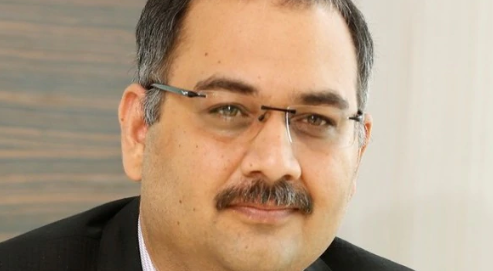John Hoffmire: I find it fascinating that you have been both an entrepreneur and an intrapreneur in the field of digital media. You’ve started companies from scratch, and you created new business enterprises within a multinational corporation. Tell me about your journey from start-up entrepreneur to a GroupM intrapreneur.
Tushar: In many ways, there is not much difference between the mindset and skills of an entrepreneur and those of an intrapreneur. The difference between the two is that an intrapreneur is already an employee of an established company, and an entrepreneur is the founder who designs, launches, and manages a new business, which almost always starts as a small business.
Both cases involve creating new businesses around markets and growth opportunities for product or services. The main differences are the setting, the degree of funding, the structure or lack of organisational structure, support, and to some degree, the level of risk.
My first foray in both the world of digital media and as an intrapreneur was during early 2000 when I first joined GroupM. Back then, it was a young company in the very new field of media agency, which was evolving and growing along with the major digital medium platforms that were also young and still somewhat undefined. I helped launch a digital media agency within GroupM called Interaction. It has now grown to a 1000+ member team and has expanded services in areas like content, search, and programmatic buying, mobile, digital activation, social, insight and digital analytics. Its practice is now the largest digital media solution provider in South Asia, with more than 500 active clients. In addition, it has been consistently rated as the best performer across all the media and digital awards.
With all that I learned launching Interaction, I left GroupM during 2007 to join the team that created a new start-up called SureWaves – a business focused on media technology. SureWaves is now a media convergence pioneer with solutions that interweave television, digital displays, mobile, and the Internet. It is one of the most innovative Indian media companies. It has also been recognised as the “Most Innovative Technology Start-Up” by the Software Technology Parks of India (Government of India).
Once SureWaves service was launched, I was then lured back to GroupM. By then, this whole new marketing and advertising universe of digital media was fully established. In the nearly 11 years since I’ve been back with GroupM, we have created a range of leading businesses in advanced TV, AI-driven programmatic, eCommerce, data analytics, and more to make advertising work better in the world. Today GroupM is the world’s leading media investment company responsible for more than $50 billion in annual media investment through it’s agencies Mindshare, MediaCom, Wavemaker, Essence and m/SIX, as well as the outcomes-driven programmatic audience company, Xaxis.
John: You clearly have had an interesting and influential career in this relatively new field of digital media and marketing. In the world of instant and constant information, how are things changing in the industry due to COVID and other new forces?
Tushar: There is no doubt that COVID 19 and the subsequent lock-downs not only resulted in a change in media consumption but also unleashed creative solutions across various parts of the industry. Both have accelerated the transformation to digital across all facets of the marketing value chain from purchase, distribution, communication, sales, and customer service. We as an industry adapted to the situation pretty quickly and to a new way of working.
I think going forward there will be higher outcome focus and an agile way of working. It will result in full-funnel focus. The line between brand and demand will start blurring across many categories, and data and technology are going to play bigger and more significant roles in the marketing communication business.
John: In 2018, you were accepted into the Chevening Research Science and Innovation Leadership Programme (CRISP) and stepped away from your responsibilities to attend classes at Oxford University for three months. Please tell me more about this program and why it was a good “next step” for you?
Tushar: My interest areas, as well as professional responsibilities, revolve around digital, transformation, and innovation. CRISP was like a Corporate Vipassana – an insight meditation programme to cultivate wisdom, gain better comprehension of surrounding events through experiential learning, and interact with outstanding professionals and innovators across diverse specializations. It’s a life experience – you are not only learning from faculty and mentors, but you have an exceptional and very diverse peer group. CRISP (and Oxford University) set a very high bar and I was fortunate to learn from the best, both in terms of faculty and CRISP colleagues.
John: Thank you, Tushar. I’m as much of a consumer of digital news, marketing, and information as anyone. You’ve given me new insights into the scope, scale, and complexity of the industry. I wish you every success with your endeavors.
Tushar: It’s been my pleasure. Thank you, John, for all you and Richard do to make the Chevening CRISP programme such a success.
Read the entire interview here at The Center on Business and Poverty
Tushar Vyas is the President for GroupM South Asia and an alum of the Chevening Research Science and Innovation Leadership Programme (CRISP), 2018
Interviewer: Dr. John Hoffmire holds the Carmen Porco Chair at the Center on Business and Poverty, and is a Research Associate at the Oxford Centre for Mutual and Co-owned Business





